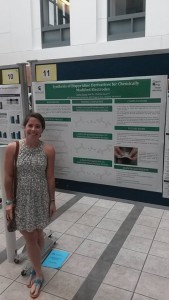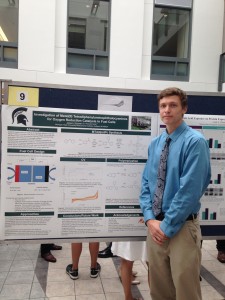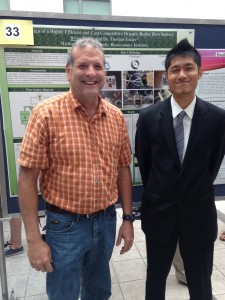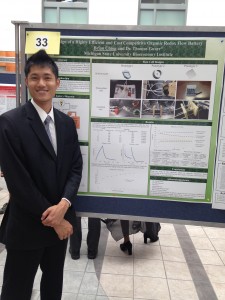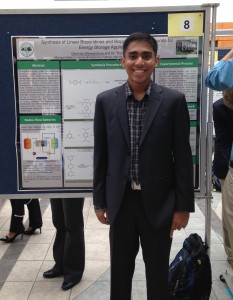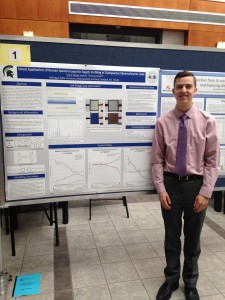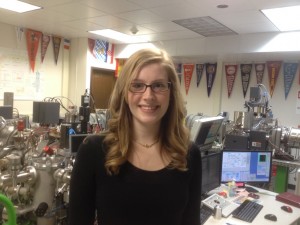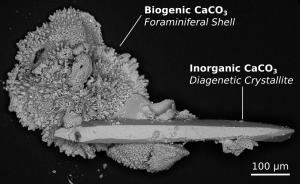Taylor performed research on electroactive materials for electrode surfaces this summer…
Synthesis of Bispyridine Derivatives for Chemically Modified Electrodes; Taylor Grace, Dr. Thomas Guarr
Attachment of electroactive materials to an electrode surface can result in the formation of modified electrodes suitable for applications in displays, electrocatalytic devices, or organic batteries. Pyridinium compounds are readily and reversibly reduced, and previous work has demonstrated that bispyridine species are especially stable in both their oxidized and reduced states. The objective of this project is to prepare several different bispyridinium compounds that can be electrochemically polymerized or covalently attached to an electrode surface. The resultant chemically modified electrodes will be characterized by spectroscopic and electrochemical methods.
Taylor is pursuing a degree in chemistry with a minor in biology at Western Michigan University. We loved having her energy with us this summer and we wish her all the best when she returns to WMU.
